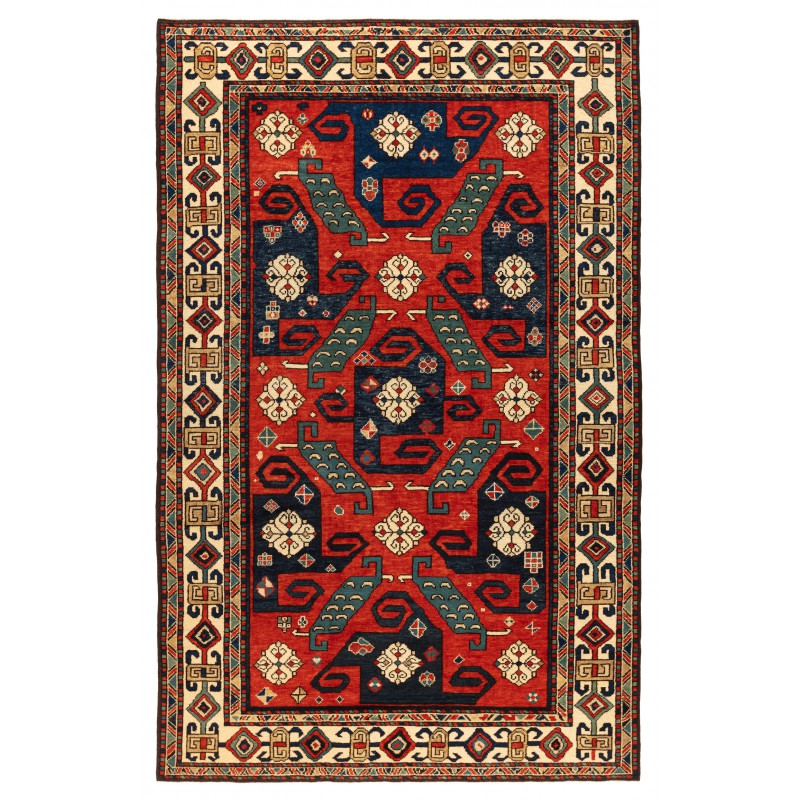
- Stock: 売り切れ
- Model: C40074
- サイズ: 147cm x 231cm
この絨毯の情報は、Joseph V. McMullanによる著書『Islamic Carpets』(Near Eastern Art Research Center Inc.、1965年、nr.53)およびIan BennettとAziz Bassoulによる著書『Tapis du Caucase – Rugs of the Caucasus』(The Nicholas Sursock Museum、Beirut、Lebanon、2003年、nr.3)からのものです。これはカザフスタン地域に関連する最もよく知られたデザインの一つで、18世紀の珍しい村や遊牧民の絨毯です。村や遊牧民の絨毯で、このような精密なフィールドパターンが見られるのは非常に珍しいです。中央の図形は、ロゼットを囲んでおり、スワスティカに似ています。配置は魅力的で力強く、優雅であり、色の対比が強くなっています。興味深いことに、1928年のリトグラフ(cf. Wright & Wertime, Caucasian Carpets & Covers, p. 137, pl. 54)には、同じフィールドレイアウトとボーダーパターンを持つ別の絨毯が描かれています。元のキャプションでは、これを村のKuttar、Borjalou地区に起源を持つタムガ(部族の紋章)のパターンとして説明しています。もう一つの具体的な例は、メトロポリタン美術館(MET Museum)で展示されています。この絨毯のデザインは、私たちのデザイナーによって解釈され、オリジナルに合った最適な色彩が使用されています。
The source of the rug comes from the book Islamic Carpets, Joseph V. McMullan, Near Eastern Art Research Center Inc., New York 1965 nr.53 and Tapis du Caucase – Rugs of the Caucasus, Ian Bennett & Aziz Bassoul, The Nicholas Sursock Museum, Beirut, Lebanon 2003, nr.3. This was a late example of one of the best-known designs associated with the Kazak area, an unusual village or nomadic rug in the 18th-century, Caucasus area. It is quite unusual to find a village or nomadic rug a field pattern worked out with such precision. The central figure, enclosing a rosette, resembles the swastika. The arrangement is attractive, powerful, and graceful, with strong color contrast. Interestingly, a lithograph of 1928 (cf. Wright & Wertime, Caucasian Carpets & Covers, p. 137, pl. 54) shows another rug with an identical field layout and border pattern. The original caption described it as having the tamgha (tribal emblem) pattern and attributed it to the village of Kuttar in the Borjalou district. The other exact example is exhibited at The Metropolitan Museum of Art (MET Museum). The design of the rug is interpreted by our designers, and the most appropriate colors to match the original is used for this rug.
